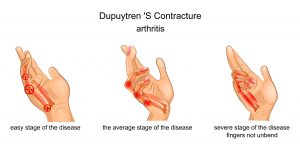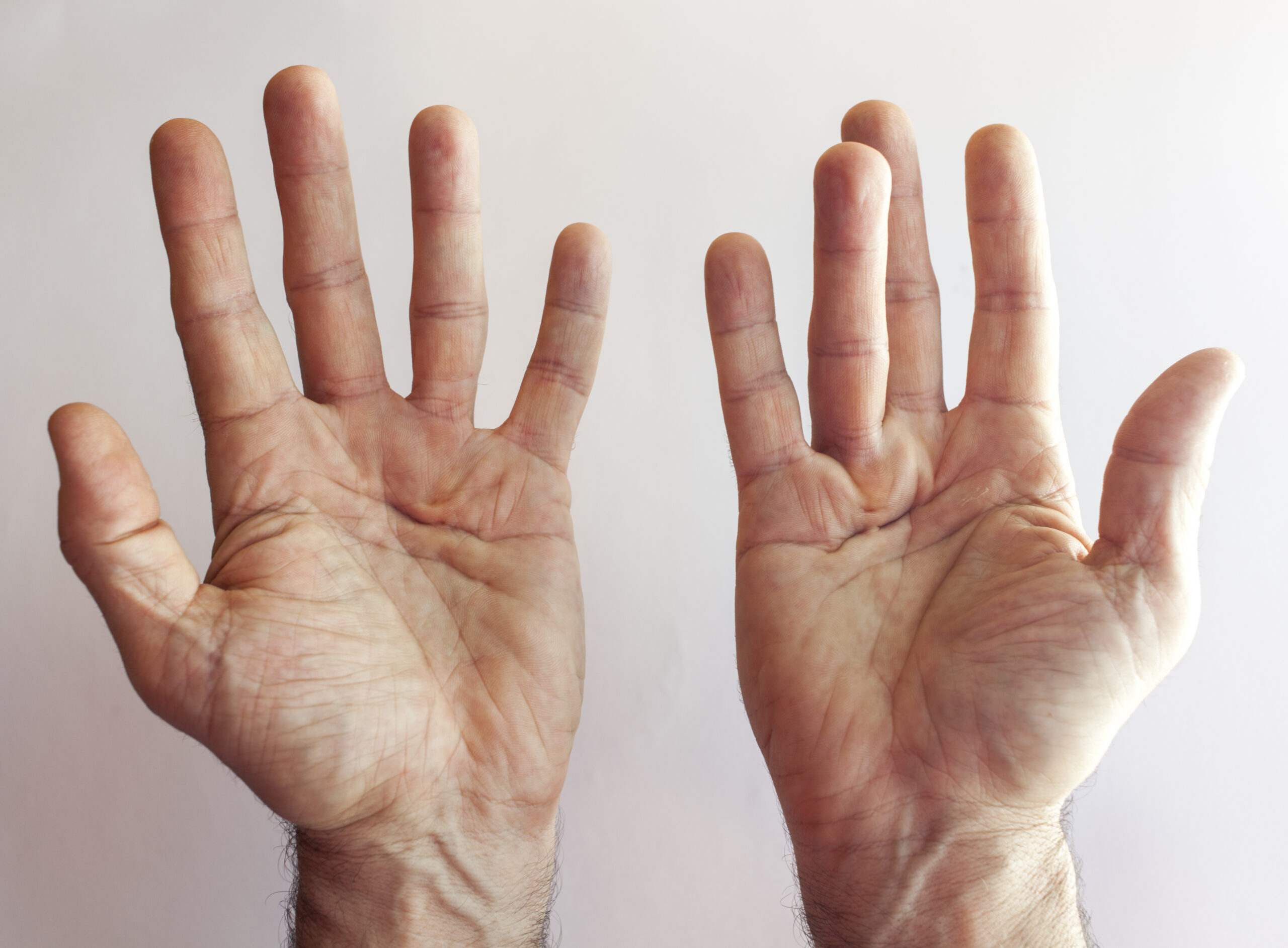Dupuytren disease (or contracture) is a condition that affects a person’s hand by locking 1 or more of the fingers into a bent position, and for that reason can have a huge impact on his or her day to day activities. Dupuytren disease is a progressive condition that affects the palmar fascia of the hand.
First off, fascia is a type of connective tissue (like ligaments and tendons) that surround muscles, blood vessels and nerves, securing some structures while allowing others to move freely. Because of how much we use our hands and move our fingers for different activities, having that freedom of movement is crucial.
Also, Check- https://panthersportsmedicine.com/blog/golfers-elbow-medial-epicondylitis/
In Dupuytren Disease the fascia in the palm of the hand will slowly thicken and shorten, causing the affected fingers to curl as it pulls on the flexor tendons of the fingers. This makes straightening the finger very difficult and can be quite painful. That being said, the finger can be bent into different directions as well, depending on where the fascia is thickening in the palm. Usually, the ring finger is the most commonly affected, followed by pinky, then the middle finger, and finally the index finger.

Cause of Dupuytren Disease
The exact cause of Dupuytren Disease is relatively unknown but there does seem to be a huge genetic component to it. People with a family history of Dupuytren’s can start to experience symptoms earlier than most, where typically the average age of onset is around 60 years old. There also seems to be a higher prevalence of the disease in people who have a Northern European background.
Men are more likely to have the disease than women, but as people age, the difference between the two gets smaller. Certain lifestyle habits such as drinking alcohol, smoking, manual labour or use of vibrating hand tools/machinery, low body weight, or high blood sugar levels seem to have an impact on someone’s chances of having Dupuytren Disease.
We will also see individuals who have such conditions as diabetes, epilepsy, HIV, history of frozen shoulder, or cancer being a higher risk of developing these contractures.
Treatments for Dupuytren Disease
Surgery is usually the first option for treatment in Dupuytren Disease. There are various types of surgeries that can be performed depending on the severity of the condition but they all involve either releasing or removing some (if not all) of the fascia that is affected.
In the most severe cases, a surgeon may even decide to remove the skin over the area and then use a skin graft to cover the hand. Unfortunately even having the surgery might not completely resolve the issue as there is a high reoccurrence rate of developing the condition again after surgery, and a person’s chances of having it again (i.e. northern European, male, family history etc.) will have an impact on what type of surgery someone will have.
Since the primary treatment option for Dupuytrens is surgery, physiotherapy is primarily done post-operatively. Our main goals our maintaining hand and finger range of motion. We do this through splinting, developing an exercise program, managing swelling, and scar massage techniques. Modalities such as shockwave therapy, which aims to break up adhesions, can help manage or maintain the condition but ultimately surgery is the best option.





